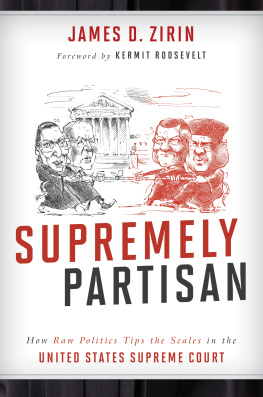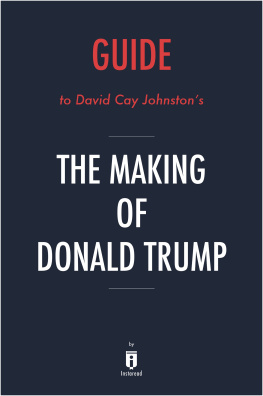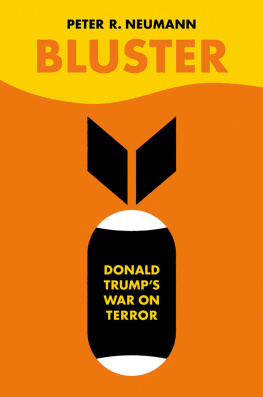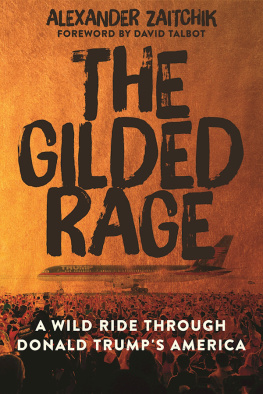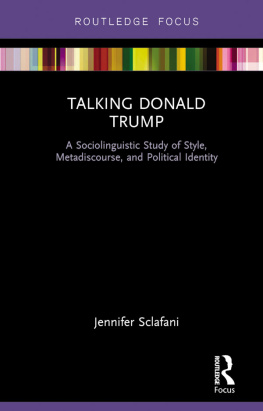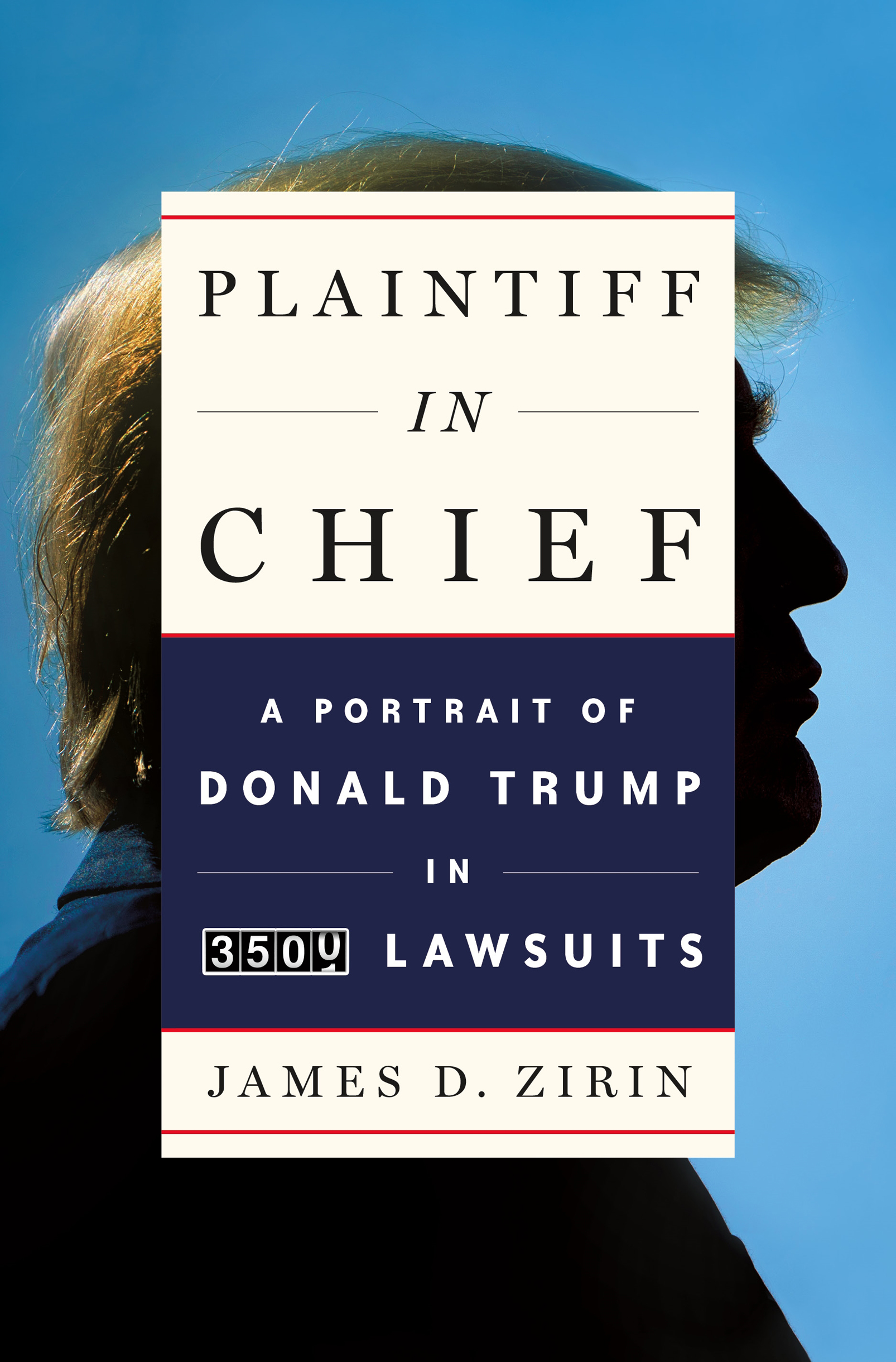The author and publisher have provided this e-book to you for your personal use only. You may not make this e-book publicly available in any way. Copyright infringement is against the law. If you believe the copy of this e-book you are reading infringes on the authors copyright, please notify the publisher at: us.macmillanusa.com/piracy.
I have many (too many!) lawyers.
Donald Trump, Tweet, April 15, 2018
When on January 20, 2017, Donald Trump took the oath of office to become the forty-fifth president of the United States, he assumed an obligation under the Constitution to take care that the laws be faithfully executed.
Many saw Trump as the quick answer. He was the man who could fix things. He represented a garland of ismspopulism, birtherism, nationalism, and protectionism. He understood the art of the deal. He would lower taxes, deregulate our businesses, save American jobs stolen by China and other foreigners. He would crack down on the Muslim terrorists, build a wall on our southern border to exclude murderers and rapists, tear up entangling treaties, and solve the 70-year-old dispute between Israelis and Palestinians.
But Donald Trump has proved to be, as Churchill said of Russia, a riddle, wrapped in a mystery, inside an enigma. No political strategist or thinker can predict what he will say or do next, or what eccentric course he will take in violation of all norms of presidential behavior. The world seems to hang on his every tweet, no matter how false, no matter how misleading, no matter how half-baked, and no matter how cockeyed.
This book will attempt to decode and unpack Donald Trump, to explain his motivations and actions as president by examining his consistent antagonism toward legal standardsnormative rules that he has regarded his entire professional life as made to be broken. It will show that he is the by-product of two primal influences: his father, Fred Trump, and his mentor, the unscrupulous lawyer Roy Cohn. It will unveil the core of his litigation history and show how this history defines his character. The ancient Greeks posited that character is destiny, a proposition with which most of us would agree.
American society today is just as polarized as plaintiff and defendant in a lawsuit. I would argue that Trump has made us more polarized. Our fragile democracy stands broken by gridlock and bitter partisanship. In 2016, looking for an angry fix, the country was particularly vulnerable to Trumps fake populism, sexism, and xenophobia, and his promises to eradicate political correctness, ban Muslim and Mexican criminals from the country, and drain the swamp of liberal bureaucrats and judges, the gnarled denizens of the deep state.
There was a darker side to Donald Trump as well. Underneath the veneer of making America great again was a bullying style born of a lengthy litigation history and a pathological pattern of lying. It should have come as no surprise to those familiar with his background that he would seek to weaponize the justice system, use his power to bend the law, attack his enemies and critics, and claim victory when victory there was none. He had been doing this all his professional life.
Trump wakes up every morning with an irrepressible desire to win, to win big, and to win soon. Trump is a day trader. The finish line for him is always only hours away. Over the years of his professional history, he became more than litigious; he acquired a litigation mentality. He was possessed of an ugly combativeness coupled with the natural mendacity of a born salesman and promoter. His world is one in which reality is heavily spiced with make-believe, and fantasy is the new reality.
There is nothing wrong with wanting to winmost of us want to. What distinguishes Trump is that he lives in an alternate universe. He claims he has won even when he has lost. He insists he has persevered even when he has given up. He insists he has fought even when he has surrendered. And, he will tell any lie that suits his purpose. His word is meaningless; his claims are hyperbolic; his threats are hollow; his instinct for recrimination is out of control; and he will challenge the incontestable.
To a lawyer, facts matter, evidence matters, avoiding harsh and unfair results matters. Logic and reason matter too, just as they matter in a self-governing democracy longing for political stability.
Most people seek to avoid a lawsuit if they can. Litigation is costly, distracting, and time-consuming. The result can be imperfect. My law school ethics professor, the late Geoffrey C. Hazard Jr., was fond of telling his students, Litigation is a disaster. Often, the court judgment leaves the partieswho once enjoyed friendly relationsbitter, filled with recrimination, and dissatisfied with the outcome. But litigation is supposed to be an orderly pursuit of truth and justice. The adversary system, the crown jewel of the English common law, was not designed to destroy the other side but to be the best method anyone ever devised to unearth the truth so the court could administer justice fairly.
As his life in court evolved, Trump saw litigation as being only about winning. He sued at the drop of a hat. He sued for sport; he sued to achieve a sense of control; and he sued to make a point. He sued as a means of destroying or silencing those who crossed him. He became a plaintiff in chief. His pattern was more float like a butterfly than sting like a bee. Often, he would sue and, shortly thereafter, drop the case. He sued to make headlines, for the entertainment value, and to reinforce his power over others. At the end of the day, he abused the process of the law.
According to USA Today, in the decades prior to becoming president, he became a perennial litigant, involved in more than 3,500 lawsuits, proceedings, and investigations (lest anyone think this is fake news, the American Bar Association counts 4,000). Bloomberg News reported in 2016 that Trump had racked up 1,300 suits since 2000, including 72 in federal court. A Google search for Trump lawsuits yields in a trice (0.42 seconds) roughly 21 million hits.
Trump saw law not as a system of rules to be obeyed and ethical ideals to be respected but as a potent weapon to be used against his adversaries or a hurdle to be sidestepped when it got in his way.
While real estate operators are a notoriously litigious bunch who commonly run into legal disputes with contractors, tenants, and architects, Trump has had cases or controversies, either as plaintiff or defendant, in virtually all of his business ventures. The sheer volume of his litigation is astounding. And, aside from filed lawsuits, he sent innumerable cease-and-desist letters threatening to punish competitors, journalists, publishers, or anyone else who might write or say unflattering things about him. He seemed obsessed with his reputation and the Trump name, which became his brand.
Lawsuits alleging serious wrongdoing, claims, counterclaims, false denials, inconsistent positions, investigations, subpoenas directed to close associates, carefully tailored testimony, scandalous allegations, and subversion of his adversaries were nothing new to him. The legal wagons protecting him had been drawn in a circle for many years.
It would not be feasible to list and treat each of Trumps many lawsuits. It would not be very interesting either. Many of the cases have been routine matters in which Trump refused to pay counterparties to a contract for goods or services. The records of most of the cases in which he has been involved are unavailable. Much has been sealed from public view by agreement of the parties because the controversies were settled after imposing large legal fees on his adversaries. Another group of records, more than 20 years old, has disappeared with the passage of time. But it is possible to discuss some groupings of cases. The nature of these cases tells a story and paints a picture of what has gone into the man who is now the president of the United States.


